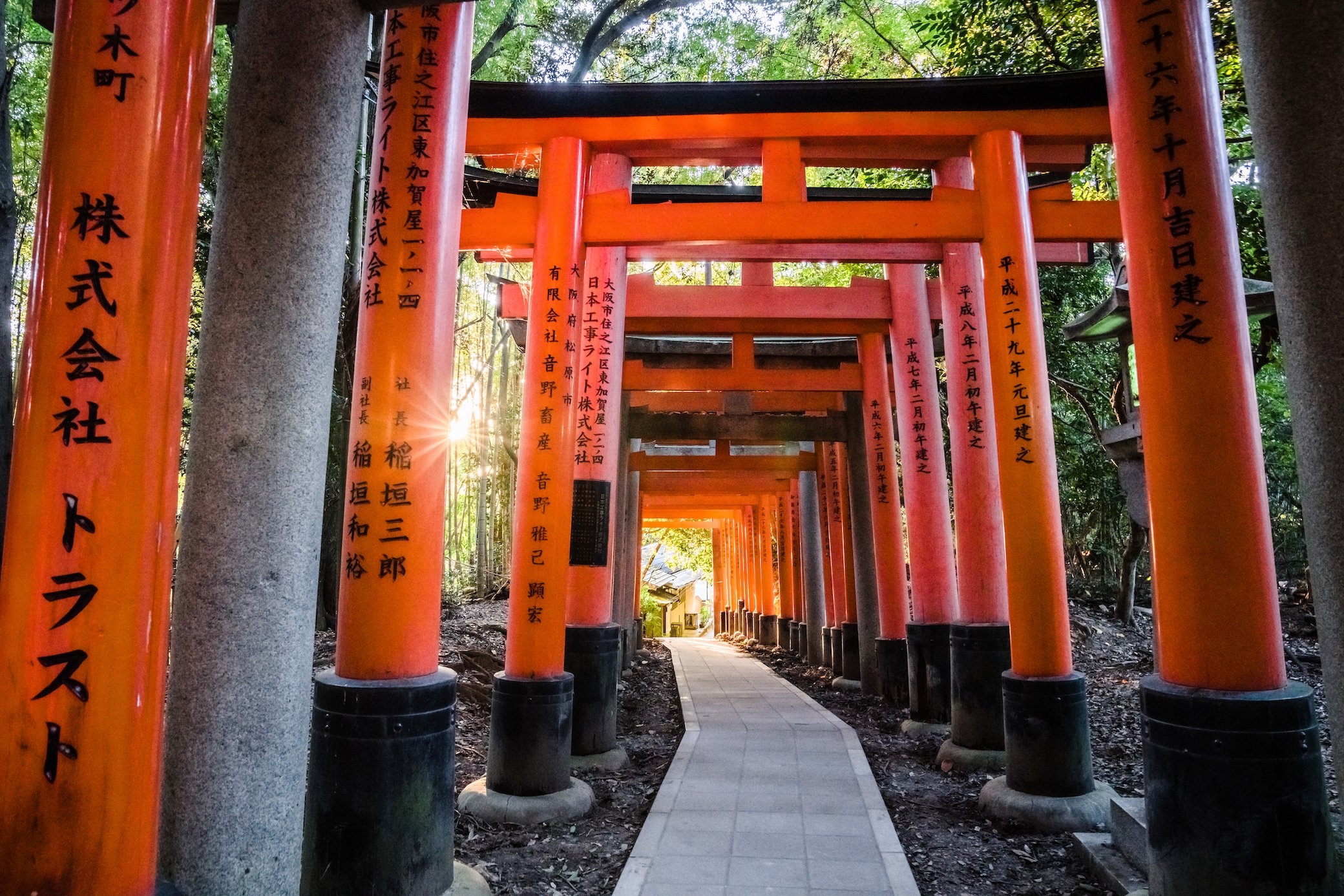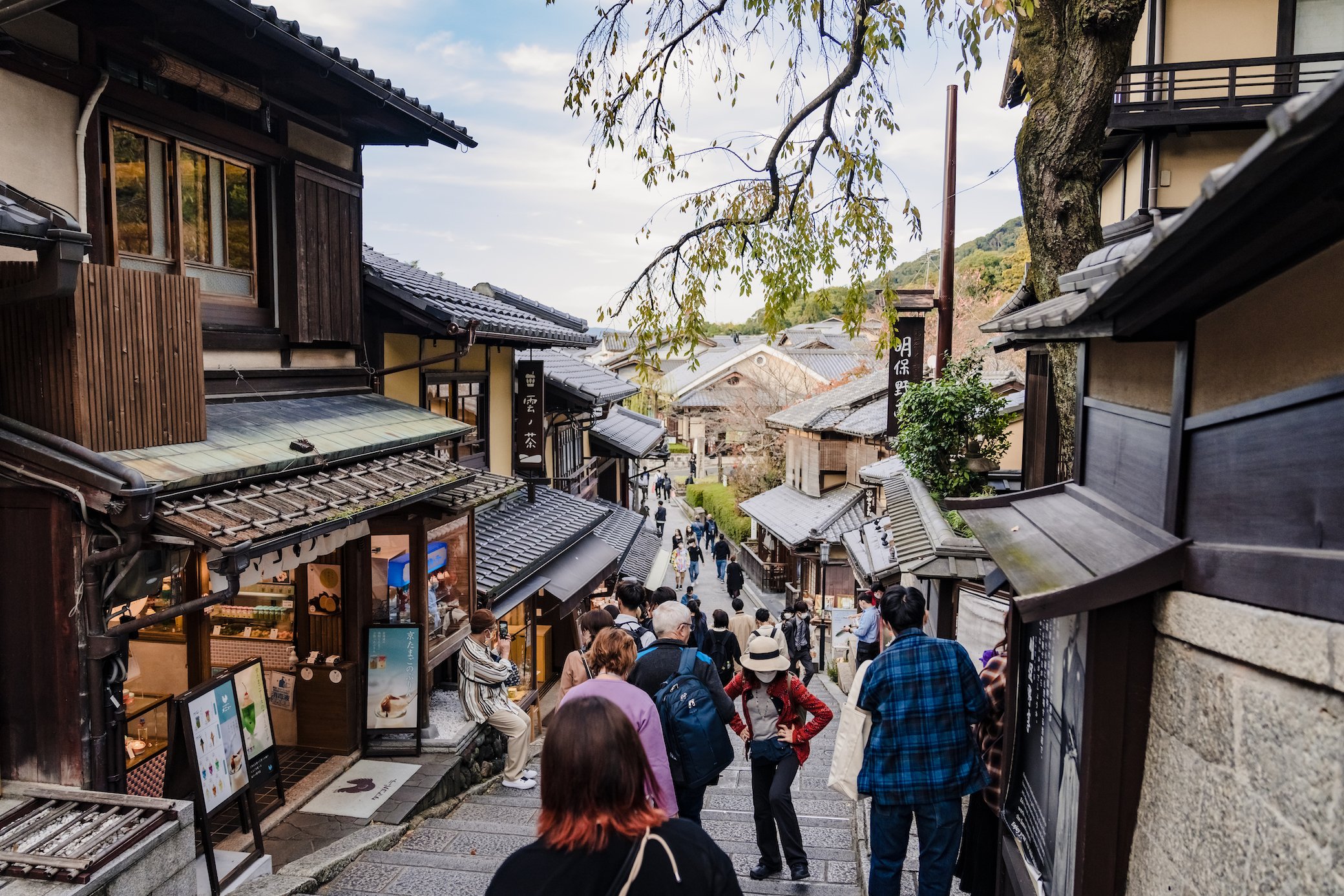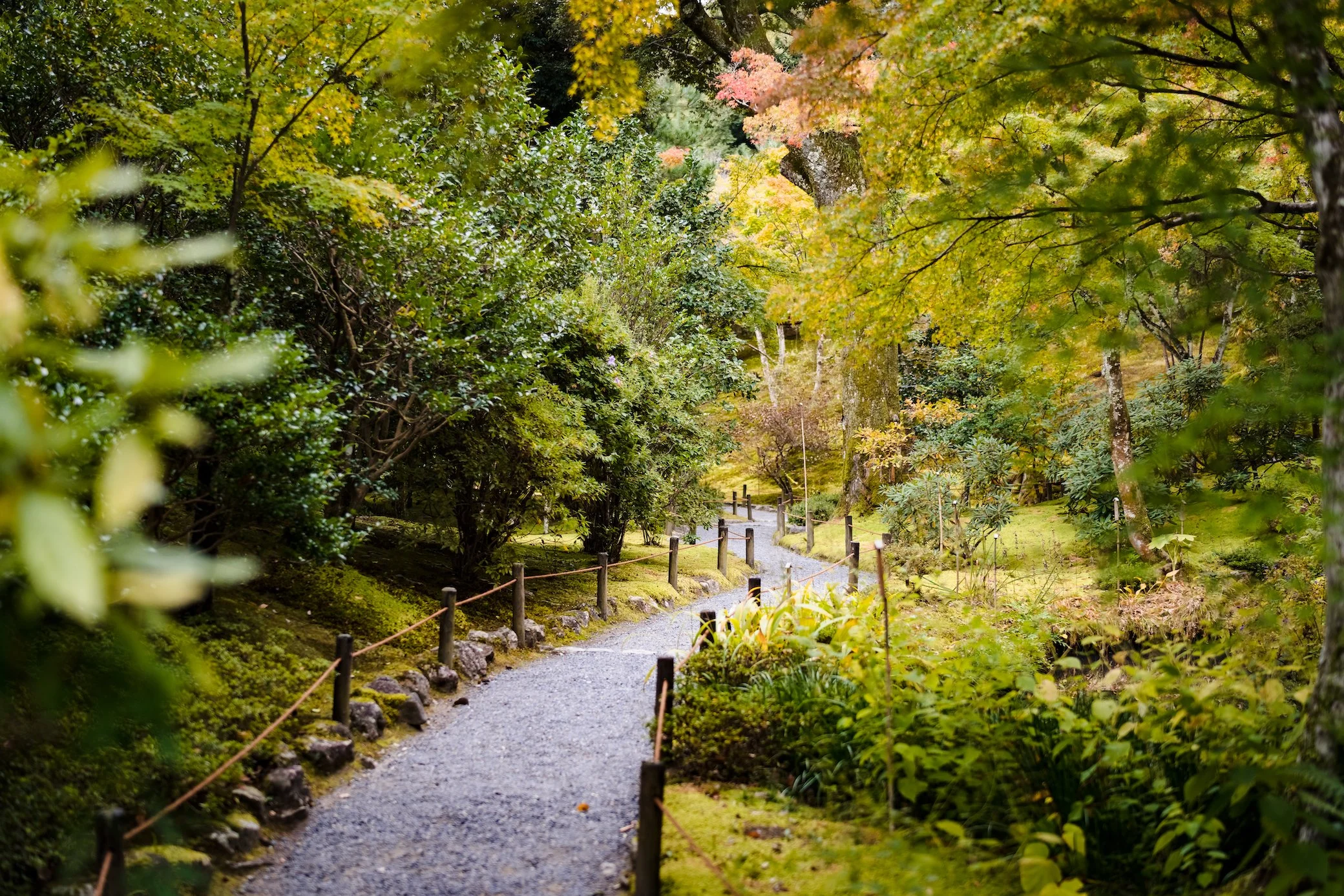My Solo Trip to Kyoto
In 2006, I embarked on my first international trip as a young adult. That summer, I left my home in North Carolina and my crying mother at the airport to study International Marketing and Sports Marketing at the University of Manchester in England. The experience forever changed me as a person and ignited a fierce love of travel that I still have to this day.
In October 2022 when we saw that Japan had at long last reopened for tourist travel without the requirement for special visas, we were inspired. My husband started talking about how Kyoto was one of his favorite places. I of course chimed in with “we should go!” We were a few weeks away from heading back to the states for four weeks to visit family, and my husband encouraged me to go there on my own for a few days before our trip home. I immediately jumped online and booked a flight. I was so excited to have the opportunity to go explore another country in Asia, I didn’t think twice.
I have traveled all over the world and oftentimes alone on my long flights overseas, but typically I was meeting someone at my end destination. Up until this point in my life, I had never actually taken a trip solo – a trip with just me, my thoughts and my usually subpar navigation skills. Adding to the challenges, I left my phone that has my international plan on it, in Korea, so I had to piece together directions when I could find Wi-Fi and elicit the help of some wonderful locals along my way. After wandering the streets of Kyoto for two days, I can say it was an incredible experience to venture out on my own. It may seem silly, but there is a small sense of accomplishment when you successfully navigate a new city utilizing public transportation, a few taxi drivers and your own two feet.
If you are planning a trip to Kyoto, here are some helpful tips and a few highlights from my time there. In just two days, I was able to see a lot, but there was not any down time during the day, I was moving! I would recommend three to five days if you are planning a trip there – it is a beautiful place with so many sights to see.
Views walking around the Arashiyama District
Misc Info
In Japan, masks are still worn indoors and many people wear them outdoors as well. It is up to the establishment whether masks are required, so if you see the sign for it, please be respectful and wear it. A lot of the temples will require you to remove your shoes before entering, as do some restaurants, so make sure you wear socks or be sure to always have a pair with you.
If you plan on making any purchases while you are there, keep your passport on you. This will save you from paying tax on most items you purchase while visiting. As far as currency goes, some cabs will only accept cash so make sure you have that on hand. I withdrew US Dollars before leaving, then had it converted to Yen at the airport when I landed in Japan. However, most of the larger retailers and restaurants accept credit cards.
Currently, there are no COVID testing requirements or visa requirements for travelers from the United States. Make sure you check the entry requirements for your country before visiting.
Getting From the Airport to Kyoto
I flew directly from Incheon Airport to Osaka on Korean Air, and then caught the JR Haruka train into Kyoto Station. The train station was easily accessible from the airport: I walked out of Customs and it was immediately to my left, up an escalator. They have clearly marked signage, which makes navigating a breeze. I utilized the ticket counter where they booked an assigned seat for me and then I was on my way. Once I arrived at Kyoto Station, I hopped on a local train and rode for just a few stops to my destination in Nijo. Though Google Maps does not work in Korea, it does work in Japan. You can enter your destination and it will tell you, down to the platform, what train and line to take at what time, and the directions you will need to reach your destination on foot. It took about two hours from the time I left Customs at Kunsai International to get to my hotel (Moxy Kyoto).
Day 1 Itinerary
1) Kitano Tenmangu Shrine
I arrived around 8:30 AM, which was perfect timing. A monk was sweeping leaves and there were only a handful of other tourists roaming the grounds. The only sounds were birds chirping in the distance, which paired with a crisp autumn morning, was glorious. I spent about thirty minutes here and, on my way out, wrote my name on a charm for extra protection during my travels. As I was leaving, busloads of students were arriving – students are able to partake in field trips again in Japan, so they were everywhere during my trip.
Address: Bakurocho, Kamigyo Ward, Kyoto, 602-8386, Japan
Hours: Opens at 9 AM (may vary by season)
Cost: Free admission
2) Kinkaju-ji (Golden pagoda)
From Kitano I made my way down to Kinkaju-ji, famously known as the golden pagoda. Like many other temples in Japan, Kinkaju-ji is surrounded by beautiful gardens, so take your time and enjoy your stroll through the tranquil grounds. When you get to the exit at Kinkaju-ji, you have the option to enjoy traditional tea and cake in the garden. If your timeline allows, I highly recommend it!
Kinkaju-ji
Traditional cake and tea in the garden
Address: 1 Kinkakujicho, Kita Ward, Kyoto, 603-8361, Japan
Hours: 9:00-17:00
Entrance: 400 yen for adults and 300 yen for children
Misc: Traditional cake and tea in the gardens 500 yen
UNESCO World Heritage Site
3) Eikan-do Zenrin-ji Temple
I made my way to Eikando Temple in the afternoon. This temple is a top spot if you plan to visit during the fall foliage. I visited at the end of October and the leaves were just starting to change.
Eikando Temple
Address: 48 Eikandocho, Sakyo Ward, Kyoto, 606-8445, Japan
Hours: 9:00-17:00
Cost: 600 yen, 1000 yen during peak fall foliage
4) Nanzen-ji Temple
Address: 86 Nanzenji Fukuchicho, Sakyo Ward, Kyoto, 606-8435, Japan
Hours: 8:40-17:00
Entrance: 500 yen
Note: There are steep stairs inside if you decide to go up
After leaving Eikando, I walked down the road and made a left toward Nanzen-ji Temple and the stunning grounds. I chose not to go into the temple and instead enjoyed walking the grounds and viewing the sights around the temple, including the Suirokaku Aqueduct.
Suirokaku Aqueduct
5) Fushimi Inari Shrine
My last stop on day one in Kyoto was the Fushimi Inari Shrine. The shrine itself is open 24 hours and there is no fee to enter, though guests are encouraged to make a small offering upon entering to pay respect. I had seen beautiful photos of the shrine online, but being there in person was surreal. If you love to hike, the trek to the top of the mountain is said to take between two and three hours. I walked for about thirty minutes but because the sun was starting to set, I opted to turn back. To avoid the mass of crowds I highly recommend going first thing in the morning or in the evening closer to sunset.



Address: 68 Fukakusa Yabunouchicho, Fushimi Ward, Kyoto, 612-0882, Japan
Hours: Open 24 hours
Entrance: Free but an offering is encouraged
Day 2
1) Arashiyama Bamboo Grove
On my second day in Kyoto, I jumped on the train via the JR San-In line to Saga-Arashiyama and made my way to the Arashiyama District before 9AM. I wanted to try to beat the crowds at the Bamboo Grove and thankfully I achieved my goal. It was an overcast, cool day, but it made the walk around very pleasant. I came across a few other people along the path through the Bamboo Grove, but overall, it was pretty empty.
Arashiyama Bamboo Grove
2) Tenryu-ji Temple
A quick walk from the Bamboo grove and you will arrive at Tenryu-ji Temple.
Address: Japan, 〒616-8385 Kyoto, Ukyo Ward, Sagatenryuji Susukinobabacho, 68
Hours: 8:30-17:00
Garden Entrance Fee: 500 yen
Temple Entrance: Additional 300 yen
UNESCO World Heritage Site
3) Arashiyama Monkey Park Iwatayama
After I toured Tenruyji, I made my way to the Arashiyama Monkey Park. I was super excited about this stop because I love animals. There is a steep hike to the top that takes about 20-minutes, but it is certainly worth it. Along the hike up, there are a few places to stop and rest if needed. As you approach the top, you may hear the monkeys running around, and once you arrive, you are rewarded with stunning views of both the city down below and mountains all around you.
The park is filled with over 100 Japanese Macaque monkeys and watching them is highly entertaining. There are signs everywhere warning you not to look them in the eye or squat down to their level, to avoid upsetting them and possibly having them charge after you – I recommend adhering to those rules.
Address: Japan, 〒616-0004 Kyoto, Nishikyo Ward, Arashiyama Nakaoshitacho, 61
Hours: 9:00-16:00
Entrance: 600 yen, plus 100 yen per bag of food at the top if you wish to feed the monkeys
4) Nishiki Market
If you love strolling through unique markets, trying new foods and people watching, Nishiki Market is for you. I spent a few hours strolling through the market, trying seafood on sticks and I even picked up a knife to bring home.
5) Nijo Castle
After I finished my morning in Arashiyama, I made my way back to my hotel for a quick break before walking to Nijo Castle, which is another designated World Heritage Site. The grounds are quite extensive, so I recommend setting aside 1-2 hours to tour the castle and grounds.
Grounds at Nijo
Address: 541 Nijojocho, Nakagyo Ward, Kyoto, 604-8301, Japan
Hours: 8:45-17:00
Entrance: 800 for Nijo castle only or 1300 yen for Nijo Castle/Ninomaru-goten Palace
UNESCO World Heritage Site
6) Higashiyama Ward and Gion District
The final “stop” of the day was the Higashiyama Ward and Gion District. I spent hours walking around these historic areas and actually came back again in the late evening to do a Geisha walking tour with the Kyoto Free Walking Tour (I highly recommend joining one of their tours). There are areas throughout Gion that are marked with “No Photography” signs on the private streets so please be respectful and do not take photos on those streets.






Kyoto is a beautiful city and if I have the chance to visit again, I will return. The flight from Korea is very short, the city is extremely clean, the people are friendly and there are still a lot of things I would love to see – there are a total of seventeen UNESCO World Heritage Sites in the city. As mentioned previously, I would recommend taking a walking tour during your visit. It's a great way to learn about the sites of the city and the history. I learned so much about Geishas and Maikos on our walking tour and we actually spotted several during our night tour, which was a fantastic experience. Do not miss this iconic city when planning your Japan itinerary!
Originally written for United on the RoK, featured in the March 2023 edition.























